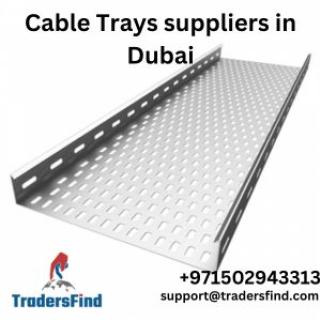With the increasingly stringent requirements of modern industry and construction for cable management systems, the limitations of traditional metal cable trays in terms of corrosion resistance, insulation, and maintenance costs are gradually becoming apparent. Against this backdrop, the FRP Cable Tray (Fiberglass Reinforced Plastic Cable Tray) has become the preferred solution in fields such as electricity, communication, and chemical industry, thanks to its unique material properties and design advantages. This article will deeply analyze the definition, structure, performance, and application scenarios of the FRP Cable Tray, and explore its collaborative value with derivative products such as the FRP Cable Ladder (Fiberglass Reinforced Plastic Cable Ladder), providing scientific guidance for industry users in product selection.
1. Definition and Core Structure of FRP Cable Tray
The FRP Cable Tray is a cable support system made of Fiberglass Reinforced Plastic (FRP for short). It is formed by the composite molding of glass fiber and matrix materials such as epoxy resin. Its core structure includes:
Main Frame: Continuous glass fibers are arranged directionally to form a mesh reinforcing layer, ensuring that the longitudinal tensile strength reaches over 300MPa and the transverse bending strength exceeds 200MPa.
Functional Components: Including modular components such as straight sections, elbows, tees, and crosses, which support flexible splicing to meet complex cabling requirements. For example, the FRP Cable Ladder adopts an open ladder structure, which is convenient for heat dissipation and maintenance of large-diameter cables.
Surface Treatment: Through ultraviolet curing coatings or flame retardant additives, weather resistance is improved, and fire protection ratings (such as UL94 V-0) are achieved.

2. Six Core Characteristics of FRP Cable Tray
Light weight, great strength and loading ability
The density of FRP material is only 1.8 - 2.1g/cm³, which is 1/4 of that of steel, but its specific strength (strength/density ratio) exceeds that of aluminum alloy. For example, the static load of a standard 300mm cable tray can reach 200kg/m, and the dynamic load can meet the vibration environment of heavy industrial equipment.
Superior Resistance to Corrosion
In the highly corrosive environment, like in the chemical industry and the marine environment, for the acid, alkalis, salt spray, the FRP Cable Tray material have a much higher Anti-corrosive capability than the metal materials. For instance, in a medium (pH = 2 - 12), it has an annual corrosion rate of less than 0.01 mm, with a service life of more than 30 years.
Insulation and Electromagnetic Shielding Performance
It also has natural insulation characteristics due to low dielectric constant (ε≤4.5) and high-volume resistivity (≥10¹³Ω·cm) of glass fiber, avoiding the risk of the leakage of the cable. Certain models are even equipped with stainless steel shielding mesh to suppress electromagnetic interference (EMI) and can be used in data centers and precision instrument workshops.
Flame Resistance and Flame Retardant Properties
By adding flame retardants such as aluminum hydroxide, the oxygen index (LOI) of the FRP Cable Tray can be increased to above 32, and the smoke density rating during combustion can reach SDR≤75, and it can meet the fire protection standards such as BS 6853.
Environmental Adaptation and Easy Installation
It can rapidly withstand 50 to 120 degrees of high temperature; its anti-aging performance under ultraviolet irradiation is better than ordinary plastics. The modular design improves instalartion efficiency by 40%. For instance, the FRP Cable Ladder can be assembled with snap-in connectors without welding.
Environmental Protection & Sustainable Development
The production process adopts the closed mold forming process, which reduces the VOC by 60% compared with the traditional process. The material recovery rate is over 85%, and it meets the EU RoHS Directive.
3. Analysis of Application Scenarios of FRP Cable Tray
Industrial Field
Chemical and Petroleum Platforms: Resist corrosive media such as H₂S and Cl⁻ to ensure the safety of cables in refineries (refer to the chemical plant case on page 2).
Power Substations: The insulation characteristics avoid the risk of high-voltage cable discharge, and it is suitable for power transmission and distribution systems below 110kV.
Construction and Infrastructure
Smart Buildings: The concealed trough-type cable tray and decorative colors (such as RAL 7035 gray) achieve the unity of aesthetics and function.
Transportation Hubs: The FRP Cable Ladder used in subway tunnels has moisture-proof and mildew-proof characteristics and can adapt to environments with a humidity of over 90%.
New Energy and Special Environments
Photovoltaic Power Stations: The anti-ultraviolet performance ensures an outdoor service life of 25 years.
Passive Safety Areas of Nuclear Power Plants: Pass the radiation resistance test (cumulative dose ≥10⁶Gy) in a boric acid environment.
4.Performance Comparison between FRP Cable Tray and Metal Cable Tray
| Index | FRP Cable Tray | Steel Cable Tray | Aluminum Alloy Cable Tray |
Density (g/cm³) | 1.8 - 2.1 | 7.85 | 2.7 |
Salt Spray Corrosion Resistance (hours) | ≥5000 | ≤1000 | ≤3000 |
Insulation Performance | Excellent | Conductive | Conductive |
Maintenance Cycle | Over 10 years | Anti-rust treatment every 3 - 5 years | 5 - 8 years |
Life Cycle Cost | Low | High | Medium |
5. Key Decision-making Points for Selecting FRP Cable Tray
Environmental Assessment: Give priority to using it in highly corrosive scenarios such as chemical plants and coastal areas.
Load Requirements: Select the FRP Cable Ladder with a reinforcing rib design for heavy-load environments, and the trough-type cable tray can be selected for light-load scenarios.
Certification Standards: Check international certifications such as UL, CE, and ISO 14001.
Supplier Capability: Select manufacturers with molding process and customized design capabilities.
Conclusion
The FRP Cable Tray has successfully solved the pain points of traditional cable trays in terms of corrosion resistance, insulation, and lightweight through the innovative integration of materials science and engineering design. Whether in the harsh environments of the industrial field or the refined requirements of smart buildings, its modular design and excellent performance have demonstrated irreplaceable value. For enterprises that pursue long-term return on investment and sustainable development, the FRP cable tray is not only a choice for technological upgrading but also a strategic decision for the future. If you need to obtain FRP Cable Ladders suitable for different scenarios and customized solutions, you are welcome to visit our product page to get one-on-one technical support from professional engineers.







